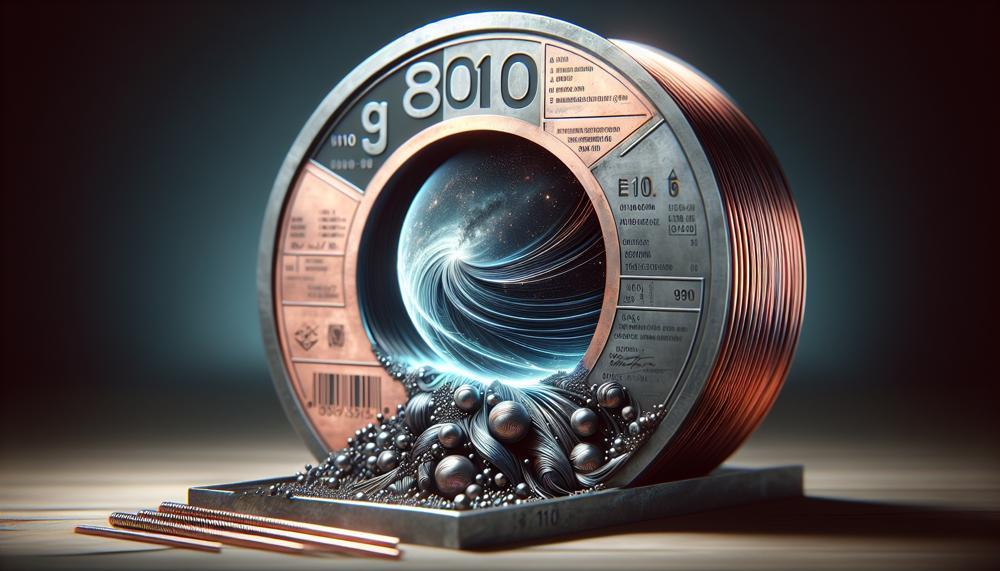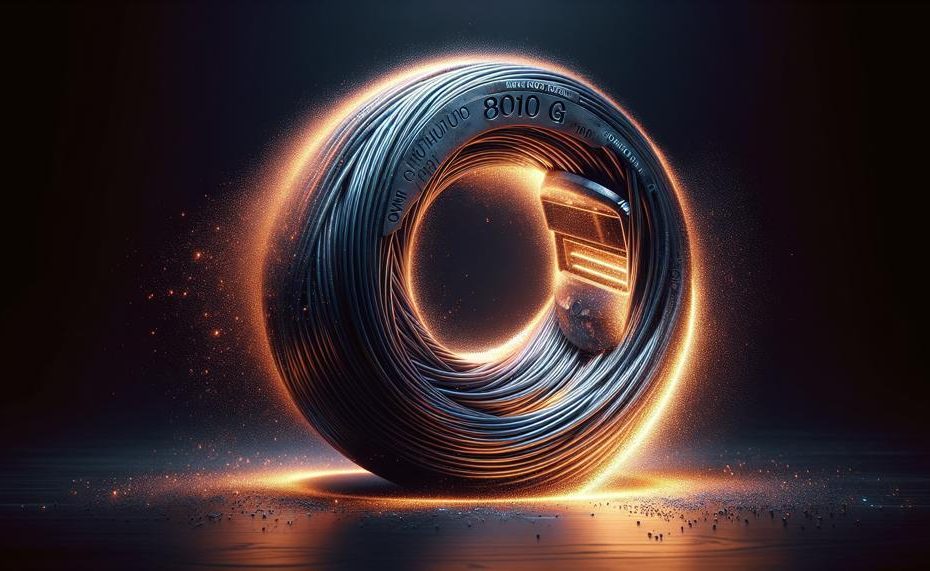Are you tired of searching for the perfect welding rod that can handle any job? The 8010 g welding rod has got you covered. This versatile and reliable tool has become a go-to choice for many welders in various industries.
But what exactly makes it stand out from other welding rods? In this blog post, we’ll take a deep dive into the world of 8010 g welding rods and uncover its purpose and uses.
Get ready to learn everything you need to know about this essential tool.
- First things first, let’s talk about its all-position electrode feature. This means that the 8010 g welding rod can be used in any position while welding – making it incredibly convenient and efficient. But that’s not all, this type of rod is primarily used for joining low alloy steels and can even be used for repairing cast iron. Its high tensile strength and crack resistance make it ideal for heavy-duty applications, ensuring strong and durable welds every time.
- The flux coating on this rod provides excellent protection against corrosion – making it suitable for outdoor use as well. No more worrying about your welded structures rusting away over time. And if that wasn’t enough to convince you, the 8010 g welding rod also produces minimal spatter, resulting in cleaner welds with less post-weld clean-up required.
So whether you’re working on structural steel, pipelines, or farm equipment – the 8010 g welding rod is your ultimate solution. Say goodbye to constantly switching between different rods for different jobs.
With its versatility and reliability, this welding rod will make your job easier and more efficient than ever before.
Keep reading.
Contents
8010-P1 welding rod
When it comes to welding rods, there are two popular options: 8010 and 8010-PWhile both are low hydrogen electrodes designed for high strength steels, they have distinct differences that set them apart from each other.
These differences include their tensile strength, elongation rate, chemical composition, electrode coating, and recommended usage.
| 8010 | 8010-P1 | |
| Tensile Strength | High (up to 80 ksi) | Slightly lower than 8010 (around 75 ksi) |
| Elongation Rate | N/A | Higher than 8010 |
| Chemical Composition | Low hydrogen + molybdenum and vanadium | Low hydrogen + molybdenum and vanadium |
| Electrode Coating | Basic coating for smoother arc and less spatter | Cellulose potassium coating for deep penetration arc ideal for root passes on pipe joints |
| Recommended Usage | HSLA steels with yield strength up to 80 ksi | Pipe joints in the oil and gas industry, can be used on HSLA steels and carbon steels |
In summary, the main difference between the 8010 and 8010-P1 welding rods lies in their properties and intended uses. While both are low hydrogen electrodes designed for high strength steels, they have distinct differences that set them apart from each other.
These differences include their tensile strength, elongation rate, chemical composition, electrode coating, and recommended usage.
8010G welding rod
The 8010G welding rod is recommended for use in shielded metal arc welding (SMAW), gas metal arc welding (GMAW), and flux-cored arc welding (FCAW) in various positions such as horizontal, vertical, and overhead. It can also be utilized in different welding techniques, providing versatility to the skilled welder. An alternative to the 8010G is the 8010-P1 electrode, specifically designated for pipeline steel welding but with similar chemical composition and properties as the 8010G.
To ensure strong welds with minimal slag formation, both electrodes require the whip and pause method for better control over heat input. This technique allows for precise control and produces quality welds even on complex projects. However, proper training and experience are necessary to handle the 8010G welding rod effectively.
Similarities between 8010G vs 8010-P1 welding rod
There are numerous noteworthy similarities between 8010G and 8010-P1 welding rods that make them both popular choices for high-strength welding tasks.
| Similarity | Description |
| Engineered for high-strength applications | Both 8010G and 8010-P1 welding rods are engineered to meet the demands of welding projects that require exceptional strength and durability. |
| Elevated silicon content | Compared to other welding rods, both 8010G and 8010-P1 have a higher silicon content, making them well-suited for welding on high-silicon pipelines. |
| Enhanced mechanical properties | The increased silicon content in these rods aids in deoxidizing the weld metal and enhancing its mechanical properties, resulting in stronger and more durable welds. |
| Similar chemical compositions | Both rods have comparable chemical compositions, including elements such as carbon, manganese, nickel, chromium, molybdenum, vanadium, and ferrous elements. |
| Excellent penetration and arc stability | Both 8010G and 8010-P1 offer exceptional penetration and arc stability, making them an ideal choice for vertical down welding applications. |
| Effective in various welding techniques | Both rods excel in shielded metal arc welding (SMAW), gas metal arc welding (GMAW), and flux-cored arc welding (FCAW). |
| Low levels of sulfur and phosphorus | Both rods have low levels of sulfur and phosphorus, minimizing the risk of porosity in welds. |
| Recommended welding technique | The recommended technique for using both rods is the whip and pause method, which allows for better control of heat input and reduces the risk of cracking in welds. |
| Proper storage and handling | Proper storage and handling are crucial for both rods to maintain their effectiveness. |
However, there are some notable differences between these two welding rods. While 8010-P1 is specifically designated for pipeline steel welding, 8010G is more versatile and can be used in various positions.
Additionally, 8010G is best suited for low-alloy steels with a carbon content of 0.20% or less, while 8010-P1 is designed for low-alloy steels with higher carbon content up to 0.40%.
Differences between 8010G vs 8010-P1 welding rod
The differences between 8010G and 8010-P1 welding rods are primarily found in their welding positions, hydrogen content, and suitability for different types of steel.
These distinctions significantly affect their performance in welding applications and must be carefully considered when selecting the appropriate rod for a project.
Welding Positions:
- 8010G can be used in all positions, while 8010-P1 is only suitable for vertical-down welding.
- This difference allows for more versatility in using 8010G, as it can be applied in varying welding techniques, including SMAW, GMAW, and FCAW. On the other hand, the use of 8010-P1 is limited to vertical-down welding.

Hydrogen Content:
- The hydrogen content in 8010-P1 is lower than that of 8010G, making it more resistant to hydrogen-induced cracking.
- This distinction is especially critical in high-stress welding applications where hydrogen-induced cracking can lead to weld failure.
Suitability for Different Types of Steel:
- While 8010G is best suited for low-alloy steels with a carbon content of 0.20% or less, 8010-P1 is designed for low-alloy steels with a higher carbon content of up to 0.40%.
- The higher carbon content in 8010-P1 allows for better performance on steel with a higher carbon percentage, making it the preferred choice for pipeline steel welding.
Performance:
- The increased silicon content of 0.80% in 8010G makes it particularly suitable for welding on high-silicon pipelines compared to the lower silicon content of 8010-P1.
- The higher silicon content in 8010G offers greater flexibility and heat resistance in welds exposed to extreme temperatures and stress.
- Additionally, the deep penetration and concentrated arc of 8010G make it a popular choice among skilled welders for its ability to produce clean and strong welds.
8010G vs 8010-P1 welding rod: Which one should you choose?
When it comes to welding rods, the 8010G and 8010-P1 are two popular options. While they have some similarities, there are also key differences that make each one suitable for different welding needs.
Main Differences:
- Chemical composition: The 8010G contains a higher percentage of silicon (0.80%) compared to the 8010-P1 (0.6%). This makes it better suited for high-silicon pipelines.
- Purpose: The 8010G is designed for high-strength applications, while the 8010-P1 is specifically designated for welding pipeline steel.
- Welding positions: The 8010G can be used in all positions, while the 8010-P1 is limited to vertical-down welding.
- Hydrogen content: The 8010-P1 has a lower hydrogen content, making it more suitable for projects where low hydrogen levels are crucial.
Main Similarities:
- Low levels of sulfur and phosphorus: Both rods have low levels of sulfur and phosphorus, which helps reduce the risk of porosity in welds.
- Welding technique: Both rods require a whip and pause method for welding.
- Impact resistance and penetration capabilities: Both rods possess excellent impact resistance and penetration capabilities, resulting in strong and reliable welds.
Determining the Best Choice:
To determine which rod is best for your welding needs, consider the following factors:
- Position requirements: If your project requires welding in various positions, the 8010G would be a better choice.
- Hydrogen content: If low hydrogen levels are crucial for your project, opt for the 8010-P1 with its lower hydrogen content.
- Type of steel being welded: Use the E800-G for high-silicon pipelines or E800 for general purposes. If you are welding pipeline steel, choose the specific designation of 8010-P1.
Conclusion
In conclusion, the 8010 g welding rod is a versatile and reliable tool that has become a go-to choice for many welders in various industries. Its all-position electrode feature, high tensile strength, and crack resistance make it ideal for heavy-duty applications.
The added benefit of its flux coating provides excellent protection against corrosion, making it suitable for outdoor use as well.
With minimal spatter and easy clean-up, this welding rod will not only save you time but also make your job more efficient than ever before.
No matter the task at hand – be it structural steel, pipelines, or farm equipment – the 8010 g welding rod is your ultimate solution. Its impressive performance and durability have made it a top pick among professionals in the field.
And with its similarities and differences to the 8010-P1 welding rod clearly outlined, you can confidently choose the best option for your specific welding needs.





